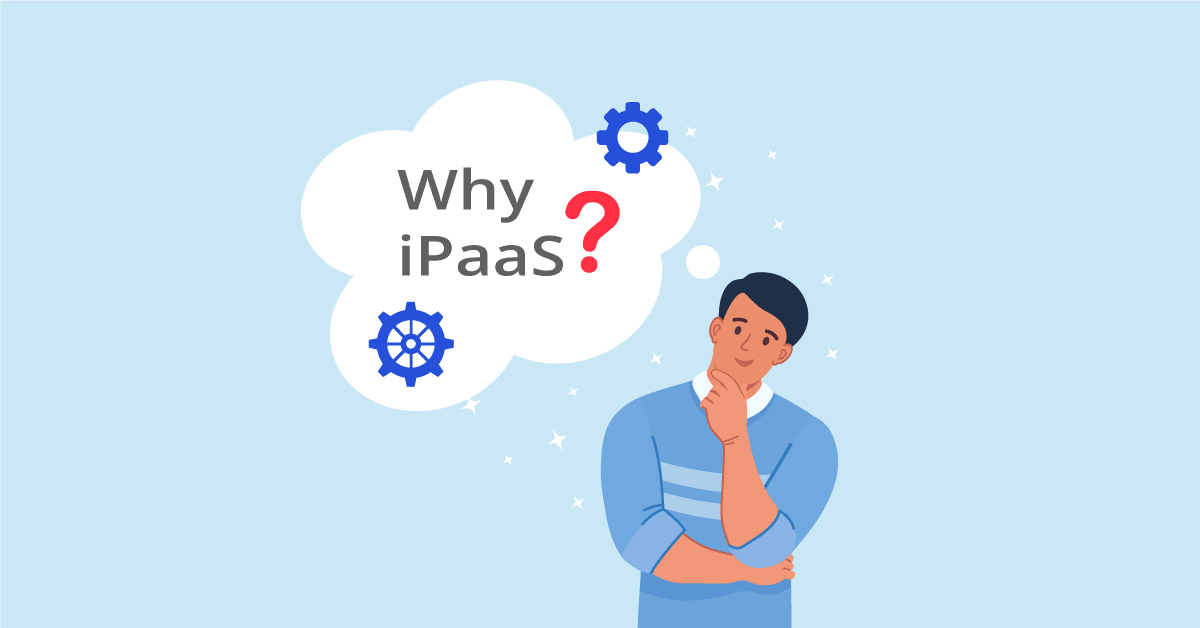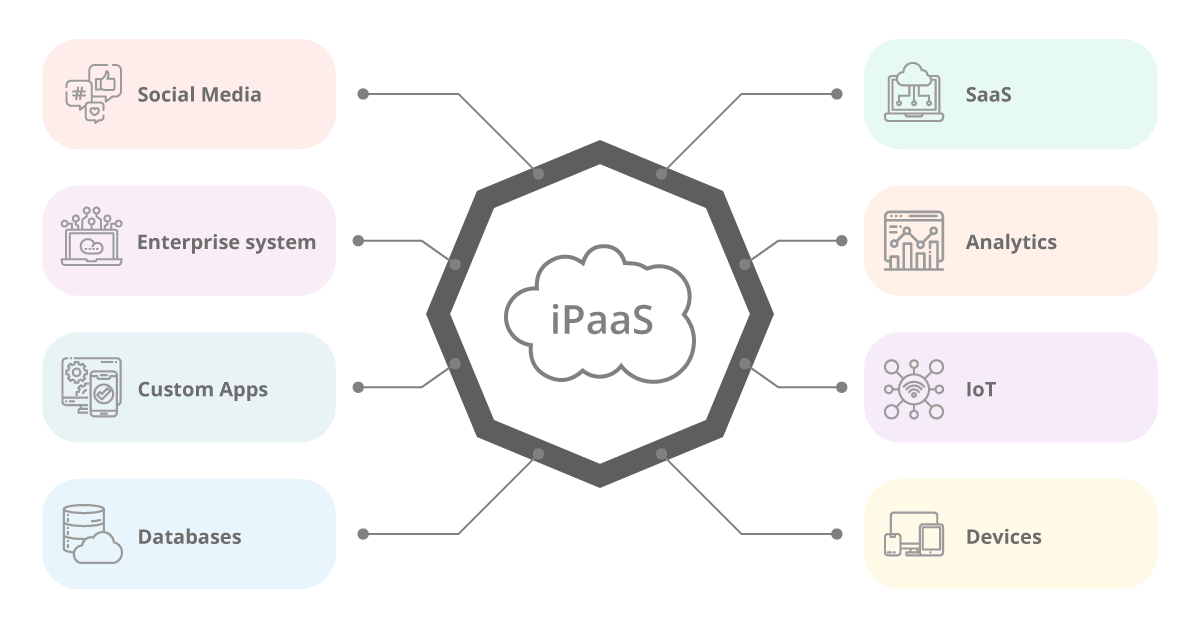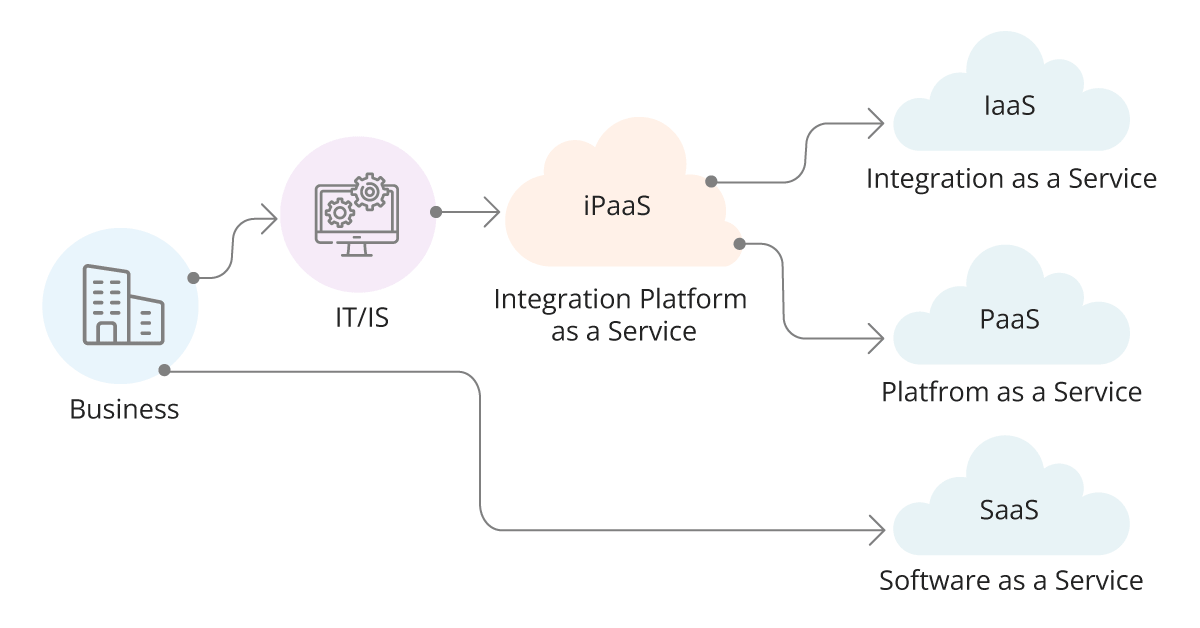You might be familiar with the concept of SaaS.
SaaS refers to a business model in which software is offered to customers on a subscription basis. In addition to the software, the SaaS provider also offers technical assistance, customer support, and upgrade opportunities to ensure that their clients can fully utilize the software to its fullest potential. These additional services aim to enhance the user experience and maximize the ability of the customer to use the software effectively.
We have come to realize that the utilization of software is not a straightforward process. People rarely rely on a single software to meet all their requirements. They tend to assemble a collection of tools and software that fit their needs by combining a plugin, a software solution, or a widget.
The expectations of consumers have shifted over time. They now demand instant responses, quick fixes, and on-demand access to the resources they need to resolve issues. They want a seamless and efficient experience that provides them with the necessary information and tools to solve their problems immediately.
From the perspective of a business, incorporating additional tools into your current software can be an expensive and resource-intensive task. It becomes increasingly difficult to cater to the diverse needs of all customers as their demands continue to grow.
Aonflow iPaaS – Free for First 3 Months!
Build and run up to 1,500 transactions monthly with no cost. No payment info needed!
Furthermore, many software companies operate with fragmented systems, where they gather data from both on-premise and cloud-based systems to create their technological infrastructure. A survey conducted by Ascend2 revealed that 57% of marketers view integrating different technologies as the top challenge to achieving success. This highlights the complexity and difficulties faced by organizations when it comes to integrating multiple systems and technologies.
When multiple systems are operating on different platforms and each plays a critical part in your business, you run the risk of loss of data, misalignment, and information that is disjointed.
In light of both the expectations of consumers and the need to streamline internal systems, it becomes essential to identify a method to create a smoother and more efficient experience. This helps to eliminate the friction that can arise from disjointed information and misaligned systems.
iPaaS as an integration solution
iPaaS, or Integration Platform as a Service, connects disparate systems to provide seamless customer solutions. It acts as a mediator between numerous systems and enables integration and sharing of data, making it a crucial component for almost every business in today’s increasingly cloud-dependent world.
In this blog, we will provide an iPaaS overview, and how it operates. We will also delve into reasons for integrating it into your business.
Different systems are used by many firms, especially among the marketing, sales, and service teams. iPaaS helps to enhance communication and information exchange between various silos through the integration of software, enabling better data sharing between teams.
Furthermore, iPaaS allows companies to expand their offerings without having to develop additional services. Instead, they could integrate with other software that provides the necessary services and offer a more comprehensive and unified solution to their customers.
For instance, let’s consider a company that sells scheduling software for hairstylists, helping them book appointments, manage their schedules, and send reminders to clients. After launching the product, the company realizes that its clients should be able to provide reviews and make payments through the software.
Instead of building these features from scratch, the company could integrate its scheduling software with reviews that exist and the software for payment through iPaaS. This approach saves money and time while enabling the expansion of service offerings and providing customers with the desired features.
These are just a few examples of how iPaaS can be used to serve internal teams and customers. The benefits of integrating iPaaS are numerous, making it a valuable addition to any organization looking to streamline its operations and enhance customer satisfaction.
How does iPaaS function?
iPaaS is a cloud-based platform that enables the creation and deployment of software applications. The software provider establishes the restrictions on the connection types that are permitted on the platform, either through pre-built connectors, an API, or other rules.
A centralized ecosystem is created by iPaaS with rules in place for managing and modifying all data, operations, and the entire infrastructure, allowing entities to modify their products, share data, and put solutions in place for the market.
In the world of cloud-based services, it’s important to distinguish between different terms such as platform, integration platform, PaaS, SaaS, IaaS, and ESB.
A platform acts as a centralized hub for all connections to products.
An integration platform creates connections between systems and different applications.
PaaS is a platform where all elements required to deploy a specific software are housed by the provider.
A SaaS system is one in which a user receives software to use as needed, with the software provider taking care of all hosting, maintenance, and deployment duties.
IaaS is a cloud-based platform that enables data integration between third-party vendors and systems.
ESB, an older tool, operates on-premises and is used for the integration and distribution of messages and data, and is considered a reliable choice for legacy systems.
iPaaS vs. PaaS
Even though PaaS and iPaaS just differ by one letter, they serve entirely distinct purposes.
In essence, a PaaS is a toolkit containing universal features used by developers to create custom apps.
Different application facets are supported by PaaS. PaaS suppliers also offer business analytics, operating systems, solutions for data management, and storage alternatives in addition to development tools. Your developers may find it easier to create data integrations with this final choice. The majority of medium-sized businesses use this kind of vendor.
Small businesses that use multiple software applications will eventually use an iPaaS solution since the same vendors do not create these applications and they are not natively integrated. iPaaS acts as a central platform for connecting these disjointed systems and delivering a unified solution to customers.
Few iPaaS providers give a comprehensive set of integration tools, similar to PaaS, but with a focus on integration. While PaaS requires developers to work with, the goal of iPaaS is to make it possible for anyone, regardless of their technical expertise, to build integrations without needing to write any code. This ease of use allows businesses to quickly and easily connect their systems, improving communication and data sharing across departments.
ESB vs. iPaaS
ESB and iPaaS are both used to connect two different applications, though they have distinct features. One key difference is their location: ESB operates on-premises, whereas iPaaS is a cloud-based solution. This means that connecting ESB to a cloud-based application can be more challenging compared to iPaaS.
When it comes to scalability, iPaaS has the advantage over ESB. The integration of new applications into a company’s workflow becomes much easier with iPaaS, as it often supports many applications and allows unlimited connections. In contrast, adding a new application to a company using ESB can be a time-consuming process that can take longer to complete.
Multitenancy is another aspect to consider. This refers to the ability of multiple users to access one software. Cloud-based solutions, including iPaaS, generally support multitenancy, whereas ESB, which relies on hardware, finds it difficult to offer the same level of support.
Advantages of iPaaS
The rapid growth of SaaS has created the requirement for more integrated systems, leading to the emergence of iPaaS. This technology was designed to provide cloud-based solutions that are speedy and seamless and can help companies integrate their systems more efficiently.
iPaas offers both internal and external benefits to companies. On the internal side, companies that use iPaaS can streamline their operations, increase efficiency and save time.
Aonflow is the leading integration platform.
You can kick-start by integrating your first-ever workflow in just a matter of minutes.
External
On the external side, software organizations that use iPaaS can offer improved customer satisfaction, with consumers benefiting from a more seamless and integrated experience.
For instance, iPaaS offers the advantage of having all data and applications integrated into one platform, making it easier for customers to access and use them. This results in a more streamlined and efficient experience for the customer, leading to higher levels of satisfaction.
Single Platform
Customers can utilize a unified platform that brings all of their software to a single, cloud-based platform, removing the need to find and implement their technology in separate environments. This streamlines the solution process and saves time.
Data Management
With the help of iPaaS, consumers can manage all their data in a centralized location and set guidelines for how the data is to be arranged and accessed. This ensures that despite using various systems, data is presented in a clear and comprehensible format. This, in turn, makes the analysis, interpretation, and application of data more precise.
Improved Collaboration & Workflow
Having a unified platform ensures that everyone is accessing the same information, reducing the risk of miscommunication or important information being lost. This leads to better collaboration and a more streamlined workflow as there’s no need to switch between multiple tools. The centralized platform creates a more productive and efficient work environment for teams.
Company Benefits
Organizations use a variety of software tools to conduct their business, such as email services, marketing platforms, document management systems, etc. iPaaS provides a solution to integrate all these tools and thereby enhance operational efficiency and streamline work processes.
Here are some of the reasons to integrate using iPaaS
Eliminate Data Silos: When companies grow and use various integrations, it can become hard to access important information and prevent critical insights from being realized. iPaaS can solve this issue by bringing all the tools together into a centralized system.
Real-Time Data Processing: iPaaS enables the processing and sharing of data in real time, thus reducing delays in accessing data and providing speedy solutions.
Increased Operational Efficiency: iPaaS eliminates disorganized management, loss of data, inconsistencies, and confusion by building a centralized management system for all parties involved, leading to increased efficiency.
Centralized System Management: iPaaS provides a single platform to manage connections, making it easier to access all integrations from a single console, as opposed to having multiple individuals or teams manage them.
Shared Instances: iPaaS allows multi-tenants to have shared instances, reducing costs, increasing speed, and eliminating overload.
Enhanced Compliance and Security: Centralizing the platform enables the detection of security threats and responds to them instantly, as well as ensuring compliance with regulations by making modifications in a single environment.
Best Practices for iPaaS Integration: To maximize the benefits of using iPaaS for integrating your business technology, it’s important to work through these recommended steps:
Before utilizing an iPaaS solution, it is essential to formulate a solid data integration strategy. This will ensure that the data syncing process between multiple applications runs smoothly. To accomplish this, you should:
Clarify the objectives you hope to achieve through data integration. This could include integrating business data (internal) for a comprehensive understanding of your operations and improved analytics or integrating data of customers from various sources for a complete customer profile.
Determining your objectives for data integration is crucial before beginning the process. This might include the integration of internal business information for a comprehensive understanding of the company and improved analytics, or integrating customer data from various platforms to gain comprehensive insights into your customers.
Determine the specific type of data to be integrated. Having clear goals for data integration will give you a better understanding of the data that needs to be integrated. iPaaS solutions use algorithms to synchronize specific data “objects” between different applications, such as names, emails, transaction information, and customer service requests. However, it’s important to keep in mind that there may be some types of data that you might not be able to integrate into iPaaS platforms.
Determine the ideal iPaaS solution for your company
Various iPaaS tools are appropriate for various tasks. Various iPaaS technologies, like Aonflow, are ideal for automating processes across various tools.
Learn more about the operations: You’ll be able to select the best iPaaS product for you after you’ve pinpointed your integration needs. Spend some time properly evaluating your alternatives before choosing the technology that will best assist you in achieving your data integration objectives.
Configure your iPaaS tool: There are many potential uses for iPaaS systems. The majority of them will let you detail the integration needs. If you do not wish to share your entire database, features like field mappings and rules let you choose which data sets to exchange between apps. Additionally, you may combine various types of information using different methods.
To distinguish your newest clients, for instance, you might mark certain connections in the CRM with the phrase “New Client.” Once this label is synced with an email marketing software, you can immediately add these new clients in an email sequence for onboarding that provides them with all helpful links, required resources, and contact information for your company should they have any queries.
Control your data: Even though iPaaS will handle much of the data maintenance for you, it’s still crucial to periodically do a manual check of your databases.
This entails eliminating duplicate data from your data, purging incorrect contact information, ensuring your data is current and removing out-of-date information, and putting in place standardized, corporate procedures for data input and administration.
Also, keep in mind to monitor your syncs to ensure your data flow is normal and that everything is working well.
Integrate Today: As we continue to shift towards a range of cloud-based solutions, iPaaS emerges as the most practical option for linking all apps and data between your organization, business, and third parties, as well as for removing any annoying aspects brought on by fragmented systems.
The key step toward improving is to have a single platform that integrates all the applications we utilize to help your business scale and grow. Together, we can do more when we are in sync and connected.
Aonflow iPaaS – Free for First 3 Months!
Build and run up to 1,500 transactions monthly with no cost. No payment info needed!


